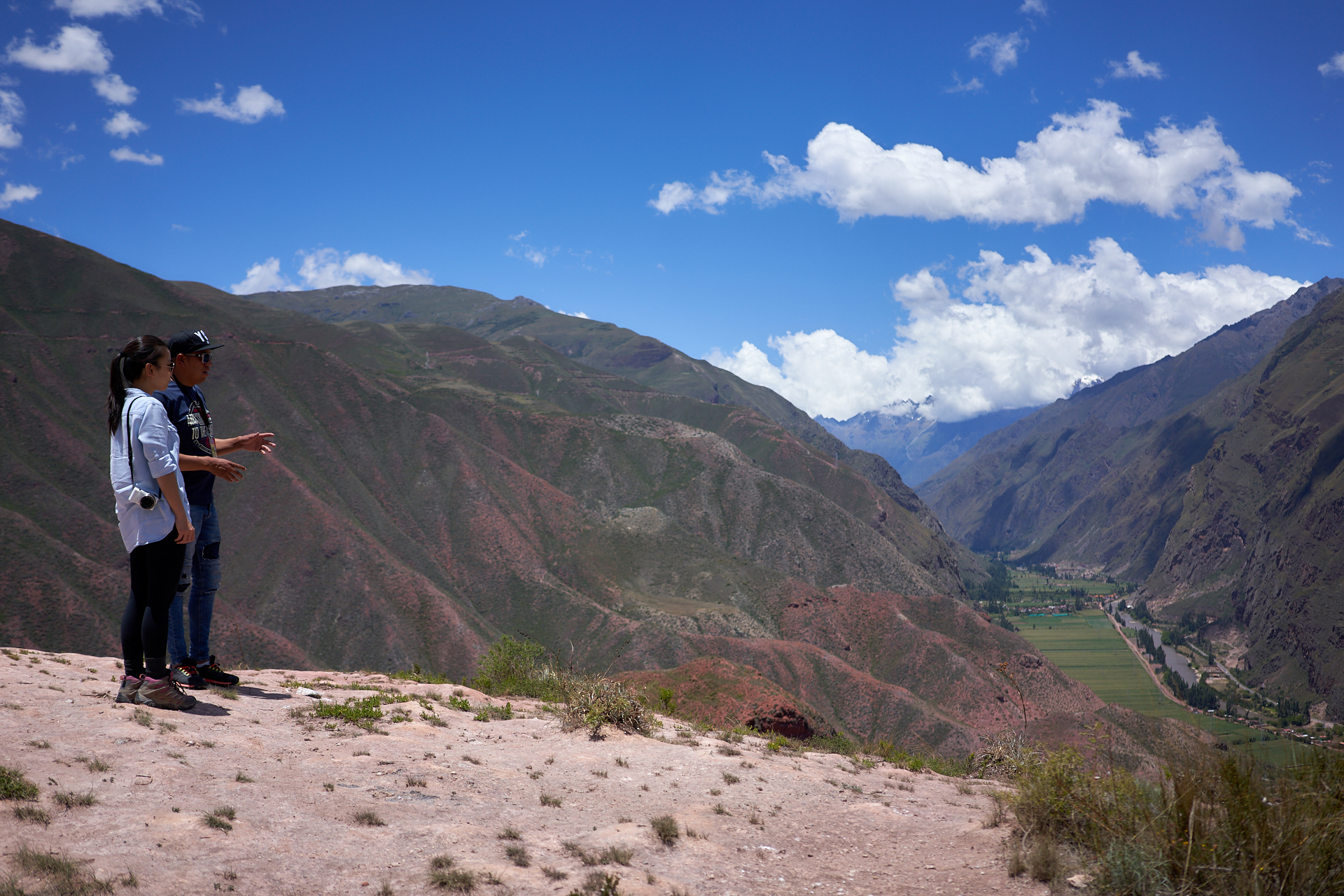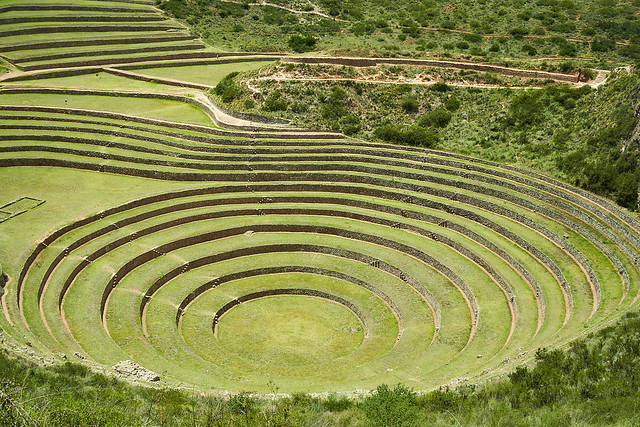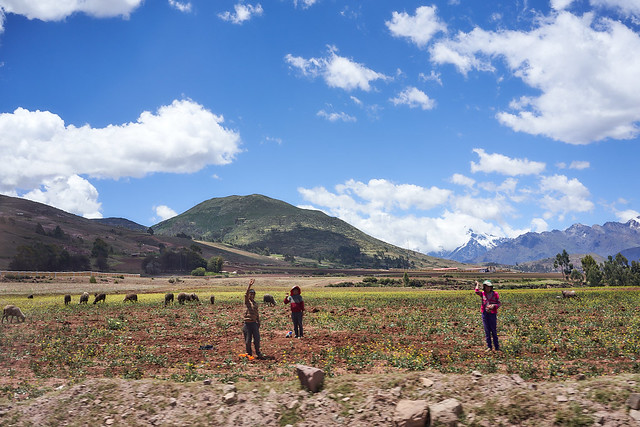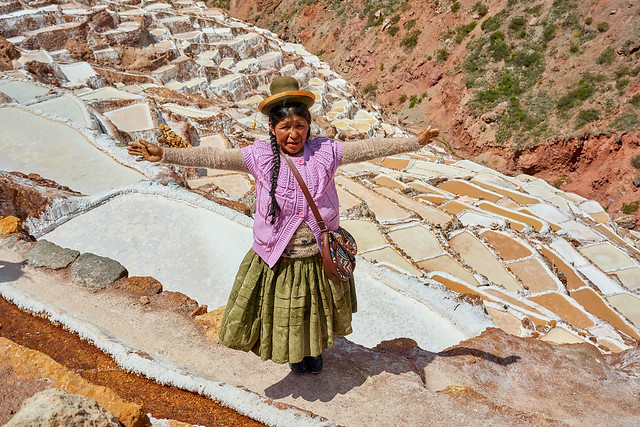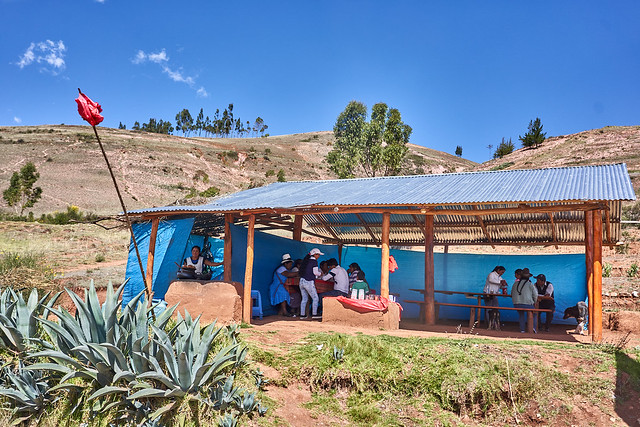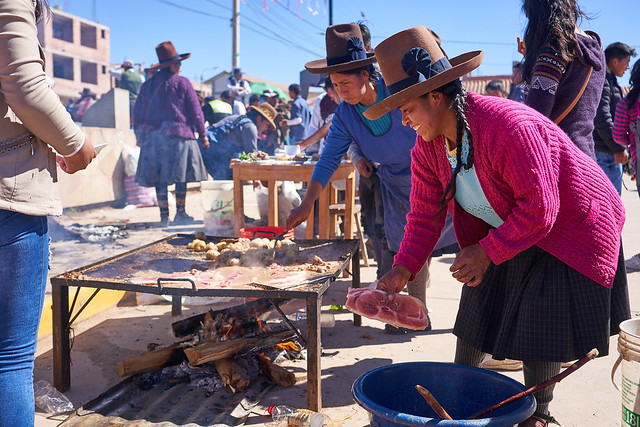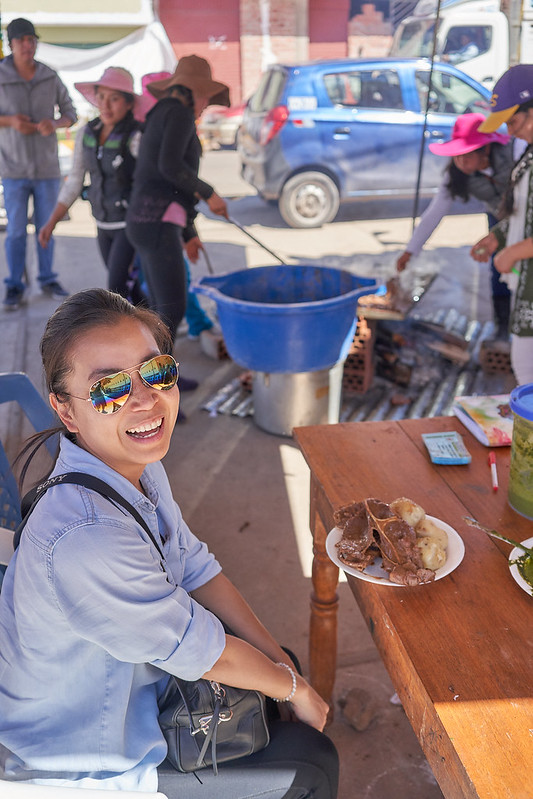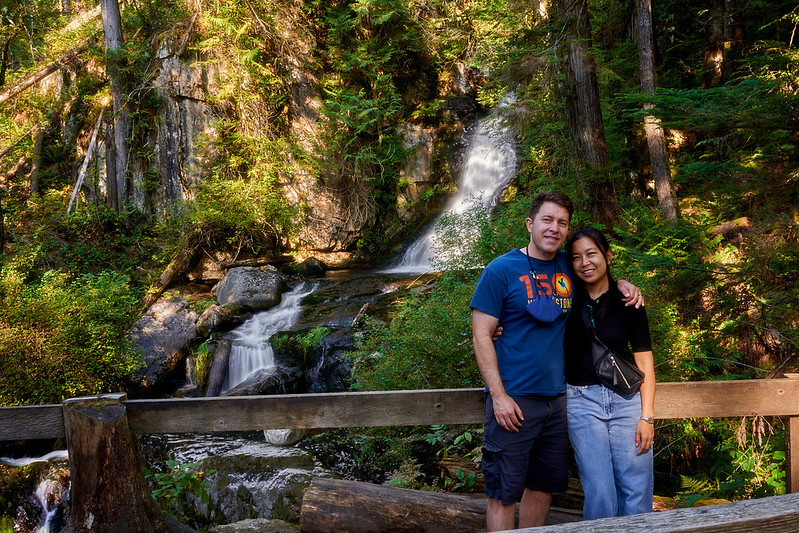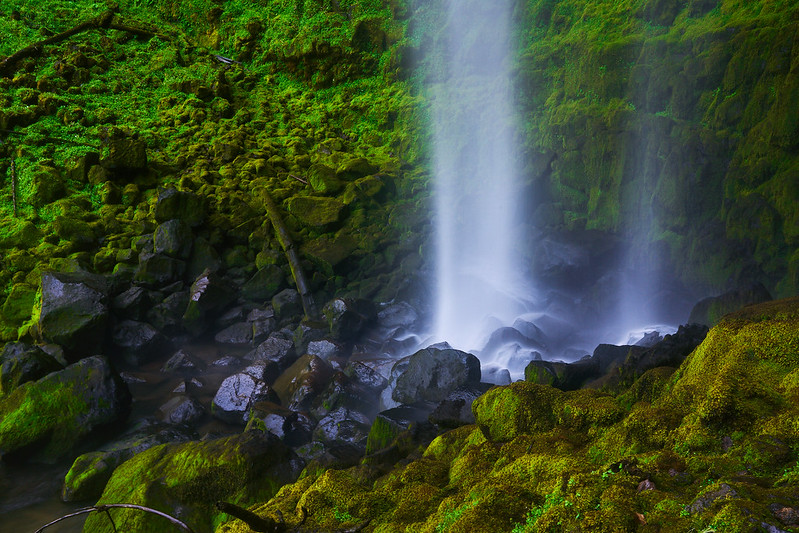We drove out of Ollantaytambo and up through the mountains beneath the snowcapped peaks of the Andes.
First, we stopped at the Moray Hills, an ancient
Our guides cut across the wide
The salt mines weren’t exactly the Mines of Moria, they were terraces (geez, are you starting to see a theme here? The Incas loved terraces, didn’t they?) dug out of the mountainside where a natural spring rich with minerals originally flowed down to the valley.
The entire world has learned to “exit through the gift shop,” and this salt mine in the middle of the Andes was no exception. Between the mine and the parking lot was a winding uphill street of souvenirs. At
Slightly further up we saw a sign for cups of “strawberry corn beer” for only 1 Sol (33 cents). How could you not? The beer was surprisingly good because it was made from the “chicha” red corn mash. Turns out the chicha drink is a regional delicacy specific to Cusco. Establishments that have it make it known by tying a red balloon on a stick outside the business.
In case you forgot, the Chicha is the drink I ordered two nights in a row in Barrancos. I had no idea at the time it was rare (although I didn’t see it on any other menus in Lima, so that was a clue), just that it was very tasty.
As we sipped on the beer we also ate Aguaymanto, or Peruvian Cherry, which is only grown at high altitudes. The soft orange rind opens up to sweet little juice packets with sourish seeds. Our guides told us you’re supposed to eat the seeds as they’re good for you. (this is the fruit at the end of the sacred valley video at the top of the post)
On the
We sat for a moment to order a plate of the barbequed beef (old beef, chewy, but hey, authenticity, right?) and potatoes for only 10 soles ($3.35 USD).
We arrived at the Cusco airport around 4 and paid to switch to an earlier flight as they could not pre-check our luggage for the international flight home. This allowed us to rest a little easier in the knowledge that we had plenty of time to get our luggage in Lima and recheck in the international terminal.
This actually became an issue. Even in Lima at the international airport, the attendants at the international check-in don’t speak English. They didn’t allow us to use the automated check-in machines and forced us into a “special needs” long line to talk to one of the few employees that spoke English. All just to check our bags and print our tickets.
At least my journey ended when we got back to LA. Sam had to turn around and go straight back to LAX for a red-eye to New York for work the same night! This time I politely declined the invitation to join her, sleep becoming a pressing priority that usurped a free hotel room anywhere.
